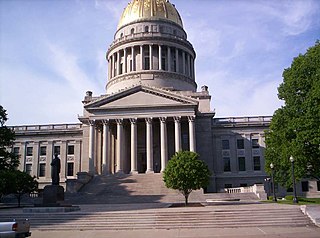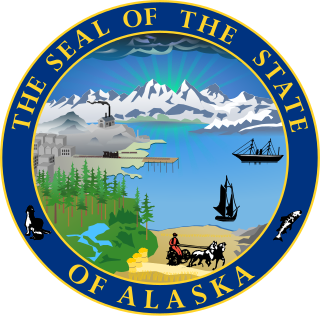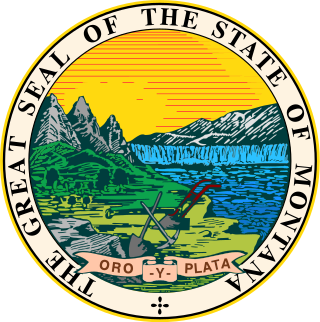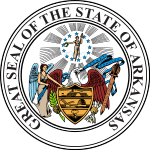
The Solid South or the Southern bloc was the electoral voting bloc of the states of the Southern United States for issues that were regarded as particularly important to the interests of Democrats in those states. The Southern bloc existed between the end of the Reconstruction era in 1877 and the passage of the Civil Rights Act of 1964. During this period, the Democratic Party overwhelmingly controlled southern state legislatures, and most local, state and federal officeholders in the South were Democrats. During the late 1800s and early 1900s, Southern Democrats disenfranchised blacks in all Southern states, along with a few non-Southern states. This resulted essentially in a one-party system, in which a candidate's victory in Democratic primary elections was tantamount to election to the office itself. White primaries were another means that the Democrats used to consolidate their political power, excluding blacks from voting in primaries.

Elections in Georgia are held to fill various state and federal seats. Regular elections are held every even year. The positions being decided each year varies, as the terms of office varies. The State Senate, State House and U.S. House will typically be up for election, as all of those positions have two-year terms. Special elections are held to fill vacated offices. Georgia is one of seven states that require a run-off election if no candidate receives a majority of the vote in a primary election. Uniquely, Georgia requires a run-off election for state and congressional offices if no candidate wins a majority of the vote in a general election; only Louisiana has a similar requirement, but it operates under a different election system.

From the time of the Great Depression through the 1990s, the politics of West Virginia were largely dominated by the Democratic Party. In the 2000 presidential election, George W. Bush claimed a surprise victory over Al Gore, with 52% of the vote; he won West Virginia again in 2004, with 56% of the vote. West Virginia is now a heavily Republican state, with John McCain winning the state in 2008, Mitt Romney in 2012 and Donald Trump in 2016 and 2020.

The results of elections in the state of New York have tended to be more Democratic-leaning than in most of the United States, with in recent decades a solid majority of Democratic voters, concentrated in New York City and some of its suburbs, including Westchester County, Rockland County and Long Island's Nassau county, and in the cities of Buffalo, Rochester, Syracuse, Albany, and Ithaca.

Elections in the U.S. state of New Hampshire are held at national, state and local level. The state holds the first presidential primary in the national cycle. Elections for a range of state positions coincide with biennial elections for the House of Representatives.

From 1836 to 1845, the Republic of Texas elected its own presidents. In 1845, it was admitted to the United States as the state of Texas, and has been a participant in every presidential election since, except for 1864 and 1868. Texas did not participate in these due to its secession from the United States to join the Confederate States of America on February 1, 1861, and its status as an unreconstructed state in 1868 following the American Civil War.

The number of elections in Alaska varies by year, but typically municipal elections occur every year, plus primary and general elections for federal and state offices occur during even-numbered years. Alaska has a gubernatorial election every four years. Members of the state's United States congressional delegation run for election or re-election at the times set out in the United States Constitution. Primary elections assist in choosing political parties' nominees for various positions. On a regional basis, elections also cover municipal issues. In addition, a special election can occur at any time.

Elections in Wisconsin are held to fill various local, state, and federal seats. Special elections may be held to fill vacancies at other points in time.

Elections in Pennsylvania elect the five state-level offices, the Pennsylvania General Assembly, including the senate and house of representatives, as well as the state's congressional delegation for the United States Senate and the United States House of Representatives. Presidential elections are held every four years in Pennsylvania. The state is one of the most competitive nationally, with narrow victories that alternate between the parties across all major offices. On the presidential level, the state has been considered a swing state throughout its entire history as it only voted for the nationwide loser on only 10 occasions. Meaning it has voted for the national winner 83% of the time, as of 2020.

Elections in Vermont are authorized under Chapter II of the Vermont State Constitution, articles 43–49, which establishes elections for the state level officers, cabinet, and legislature. Articles 50–53 establish the election of county-level officers.

Elections in Utah are held to fill various local, state, and federal seats. Special elections may be held to fill vacancies at other points in time.

The 2012 United States elections took place on November 6, 2012. Democratic President Barack Obama won reelection to a second term and the Democrats gained seats in both chambers of Congress, retaining control of the Senate even though the Republican Party retained control of the House of Representatives. As of 2024, this is the most recent election cycle in which neither the presidency nor a chamber of Congress changed partisan control, and the last time that the party that won the presidency simultaneously gained seats in both the House of Representatives and the Senate.

Various kinds of elections in Connecticut occurs annually in each of the state's cities and towns, the exact type of which is dependent on the year. Elections for federal and statewide offices occur in even-numbered years, while municipal elections occur in odd-numbered ones. The office of the Connecticut Secretary of State oversees the election process, including voting and vote counting. In a 2020 study, Connecticut was ranked as the 20th easiest state for citizens to vote in.

Some type of election in Idaho occurs annually in each of the state's cities and towns, the exact type of which is dependent on the year. Elections for federal and statewide offices occur in even-numbered years, while municipal elections occur in odd-numbered years.

Elections in Alabama are authorized under the Alabama State Constitution, which establishes elections for the state level officers, cabinet, and legislature, and the election of county-level officers, including members of school boards.

Montana became a territory May 28, 1864 and the first delegation created nine counties: Beaverhead, Big Horn, Chouteau, Deer Lodge, Gallatin, Jefferson, Edgerton, Madison, and Missoula. Montana became a state on November 8, 1889.
The State government of Arkansas is divided into three branches: executive, legislative and judicial. These consist of the state governor's office, a bicameral state legislature known as the Arkansas General Assembly, and a state court system. The Arkansas Constitution delineates the structure and function of the state government. Since 1963, Arkansas has had four seats in the U.S. House of Representatives. Like all other states, it has two seats in the U.S. Senate.

Election results in Maine comprise voting for local, gubernatorial and federal public offices, members of the state legislature, as well as ballot measures. Congressional elections are held every even year, and gubernatorial ones every off-presidential even year.

The U.S. state of Wyoming is known for its reliably conservative politics and heavy support for the Republican Party, particularly in federal elections.

Elections in the U.S. state of Kentucky are held regularly. Politics in Kentucky has historically been very competitive. The state leaned toward the Democratic Party during the 1860s after the Whig Party dissolved. During the Civil War, the southeastern part of the state aligned with the Union and tended to support Republican candidates thereafter, while the central and western portions remained heavily Democratic even into the following decades. Kentucky would be part of the Democratic Solid South until the mid-20th century.



















